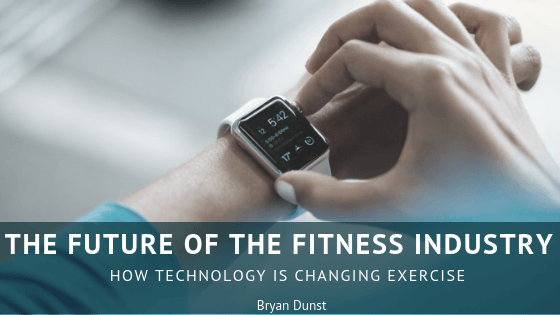If you walk into any gym or fitness class today, you are likely to pass by individuals wearing fitness trackers, wireless headphones, or some other technology piece that is believed to make the individuals exercise experience better. We are constantly looking for the most discreet fitness tracker that offers us the most data. We stand in line for the newest fitness crazes and workouts that will keep us motivated and give us the most bang for our buck. But does the increase in technology to the fitness industry make us more motivated and fit? Here is a look at some of the newest trends in fitness technology.
Wearable fitness devices are some of the most common pieces worn to track exercise data. While they compare in many aspects, they also differ in features, depending on how much money you are willing to spend.
The Apple Watch can offer users insights into their health with features such as a heart rate sensor, gyroscope, and accelerometer. Download the activity app, and you can receive reminders to stand, move, and exercise more to hit your daily goals. Another commonly found wrist-worn device is a Fitbit. Along with counting steps and active minutes, Fitbit offers its users a look at their sleeping patterns. You can also connect with friends to set fitness challenges, and receive awards for your achievements throughout your fitness journey.
New advancements in technology are now incorporating the benefits received from wrist-worn fitness trackers into clothing. Wearable body metrics might seem like something from the future. However, shoes, socks, and shirts and other clothing articles are all being designed to measure physical activity. Companies like Hexoskin have designed wearable fitness trackers in the form of shirts that measure breathing rate, peak acceleration and calories burned, among many other things.
While it may seem like wearable fitness trackers are a great resource to measure your health and fitness, some say they are doing more harm than good. Fitness trackers may provide a lot of data and encouragement to the wearer, but they will not necessarily motivate them. Director of the Penn Medicine Nudge Unit, Dr. Mitesh Patel, is referenced in an article saying “What we’ve generally found is that just giving a wearable by itself is not going to help the average person to be more healthy.”
Aside from wearable fitness trackers, other products such as smart scales and the Mirror hope to motivate users by providing in-home tracking and in person workout routines. Fitbits Aria 2 smart scale connects to wifi and provides its users with amenities such as their BMI, body fat percentage, and lean mass. One of the latest fitness technology inventions is the Mirror, which offers its customers tailored exercise classes and a personal trainer, all in the comfort of their own homes. The Mirror is what it sounds like, an actual full-length mirror that can be placed in your home. When turned on, the mirror comes to life bringing you the most in-demand workouts displayed through the mirrors LCD screen. It features a microphone, camera, and speakers, all of which help connect you to an interactive experience with those on the “other side” of the mirror.
As technology continues to advance in the fitness industry, many people have concerns regarding privacy and how devices are observing your daily habits. That being said, there are a lot of positive attributes of technology advancing the fitness industry, namely is preventative capabilities to injury and physical therapy monitoring. Investing in wearable trackers and fitness technology is a personal decision. It is important to do the proper research to find out what if any are a good fit for your life.

